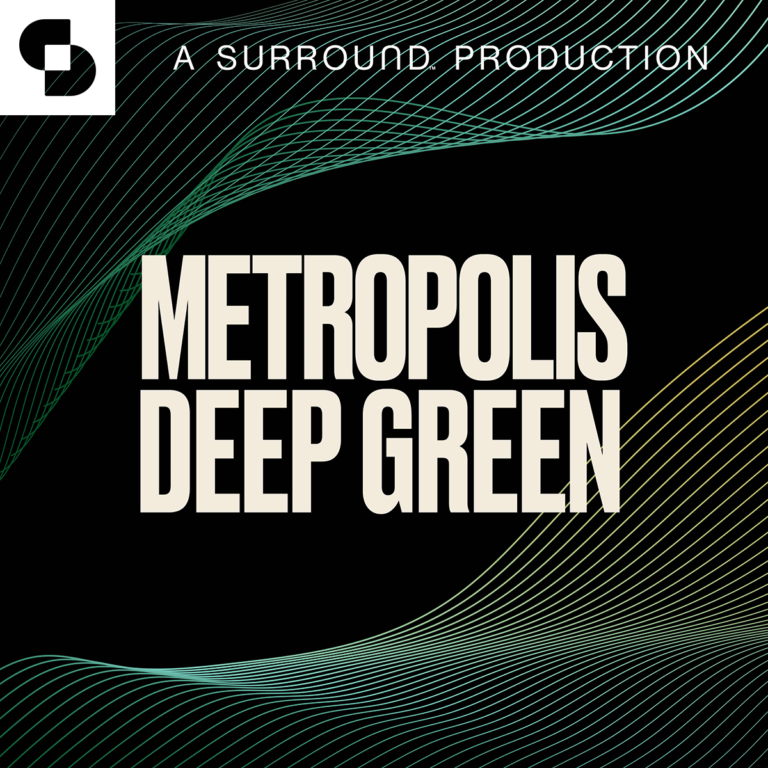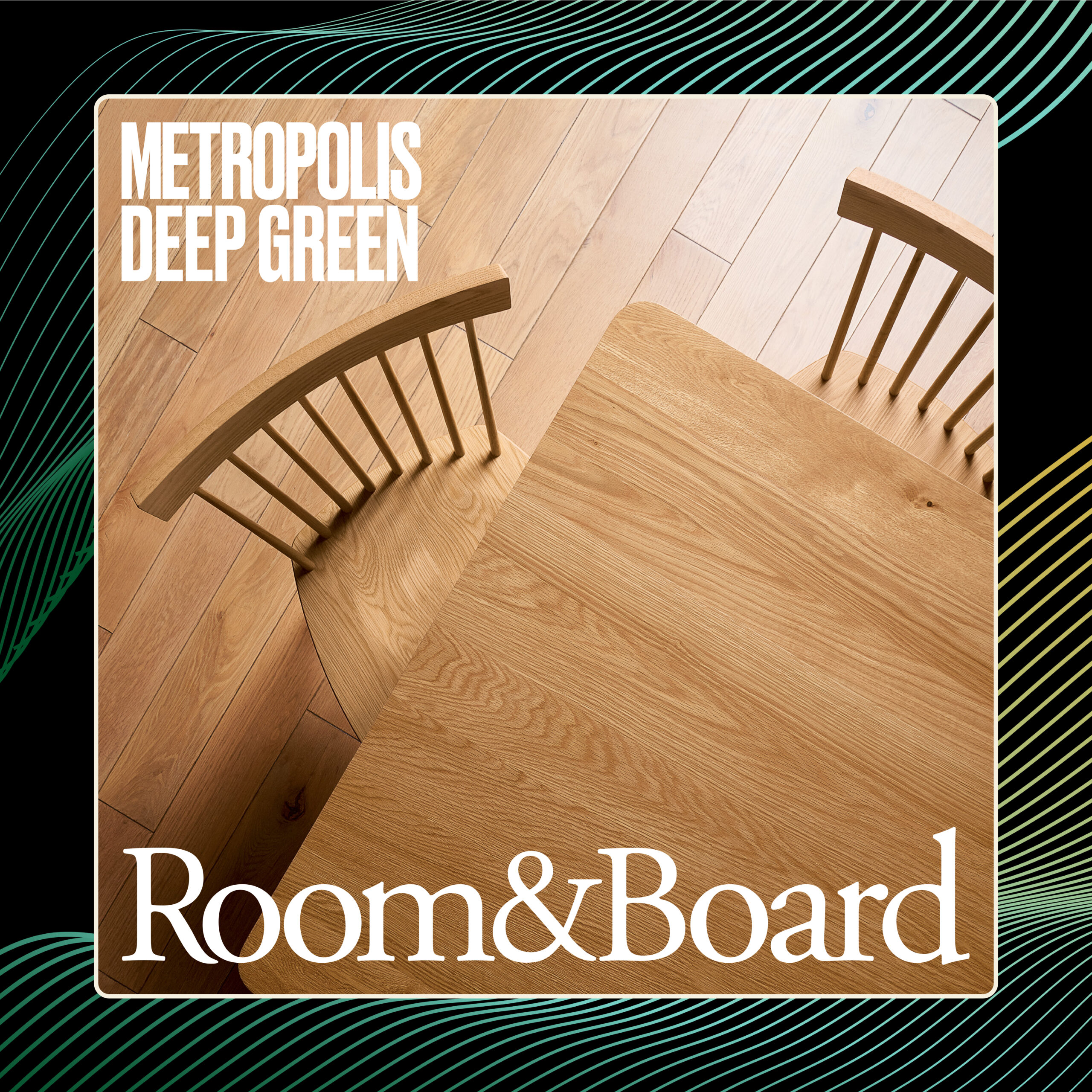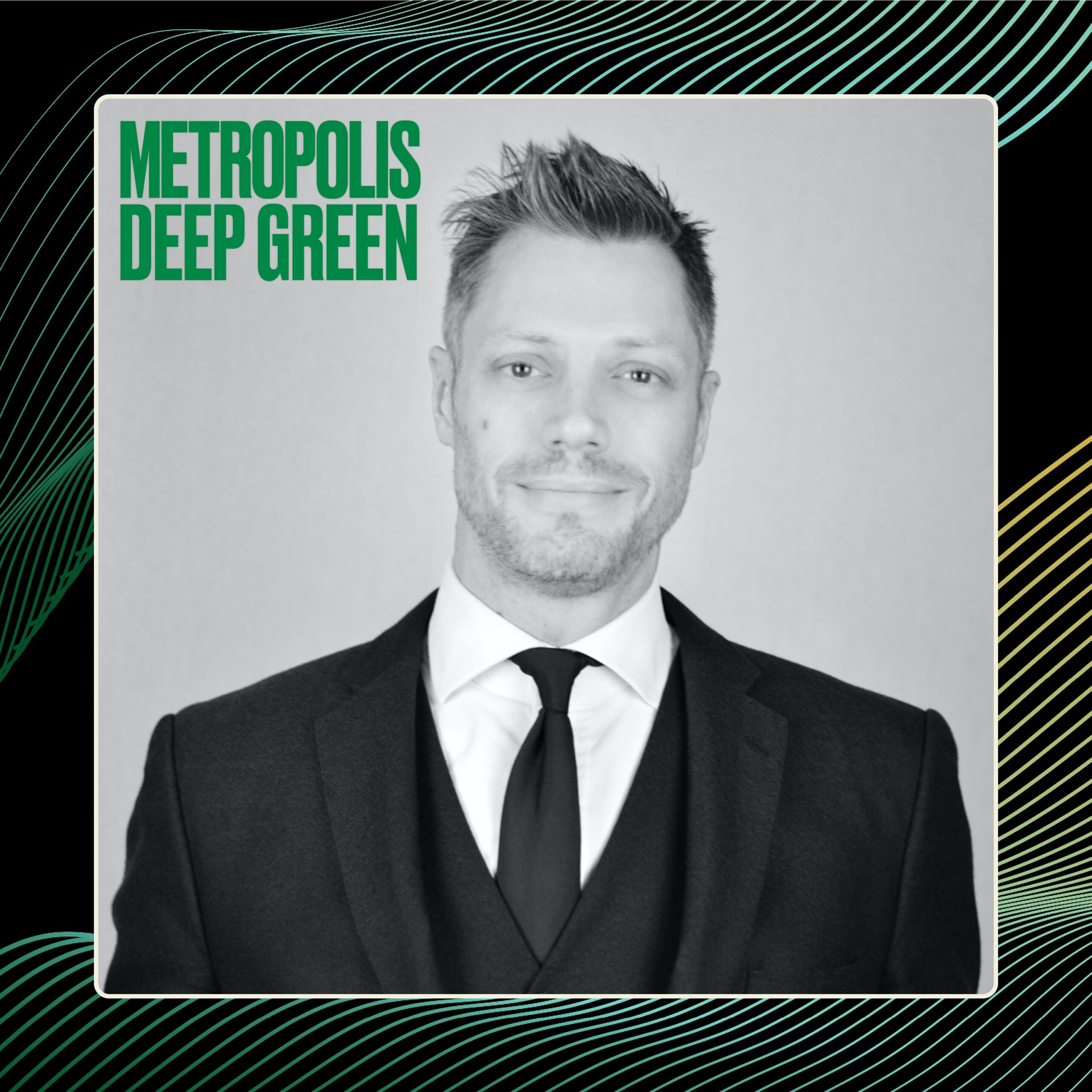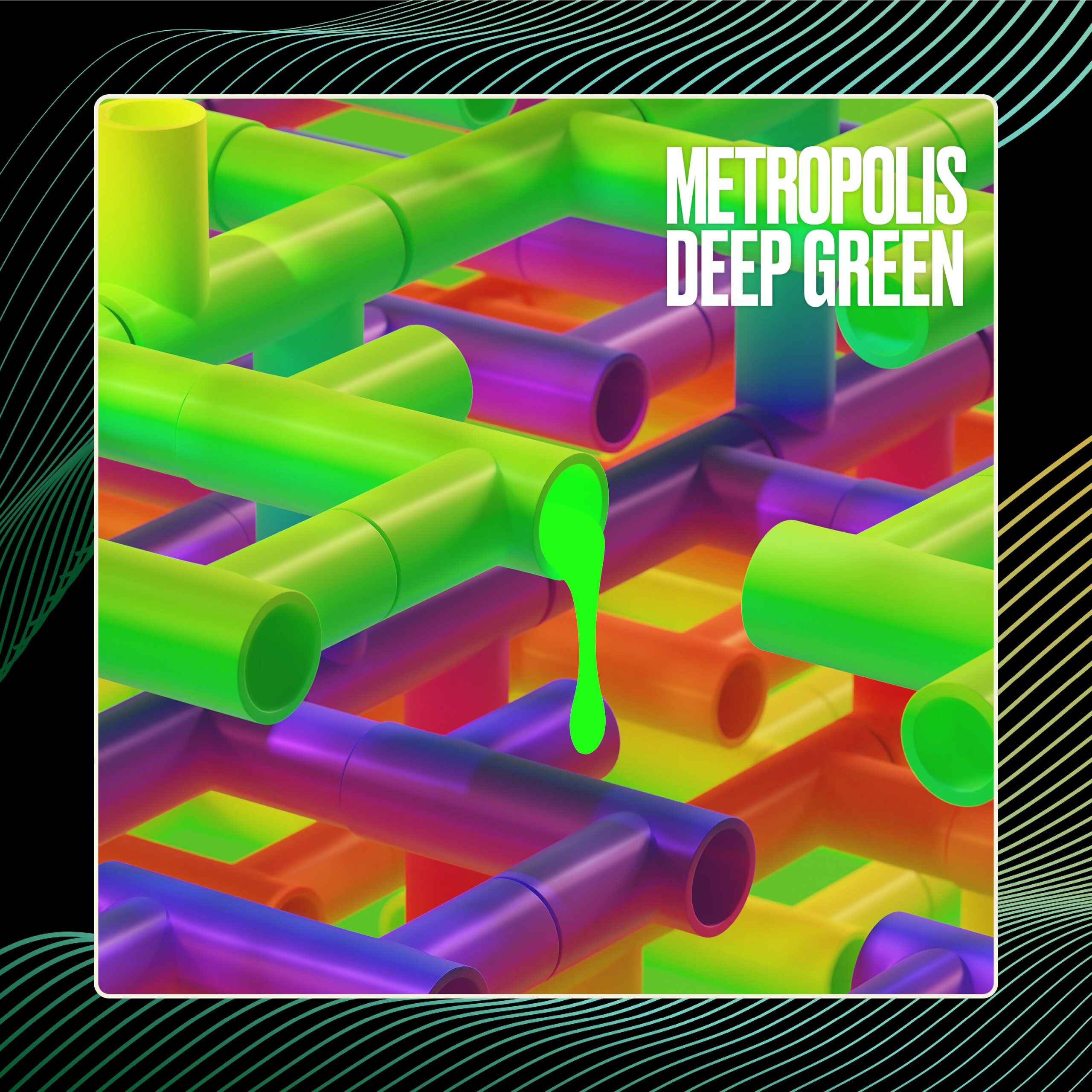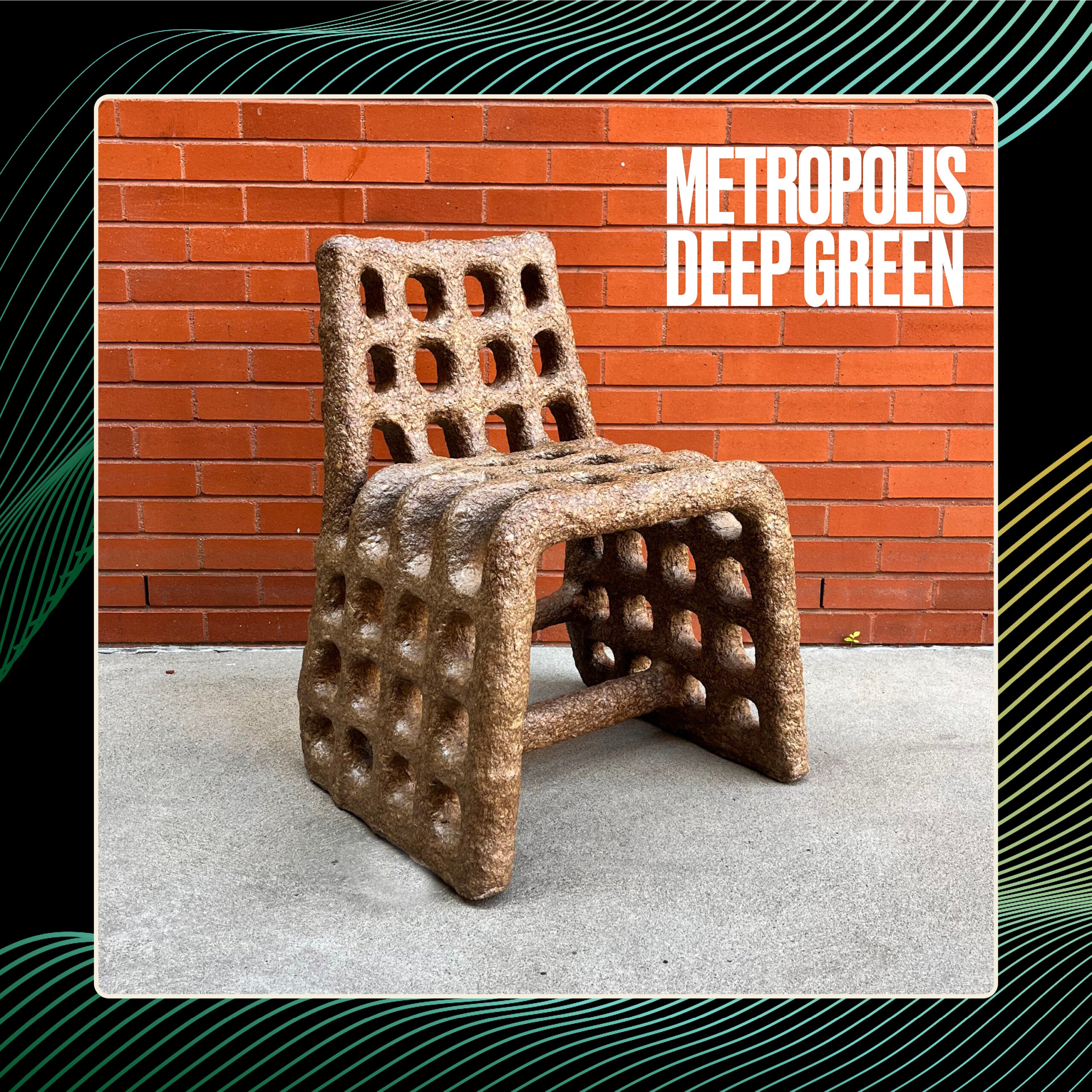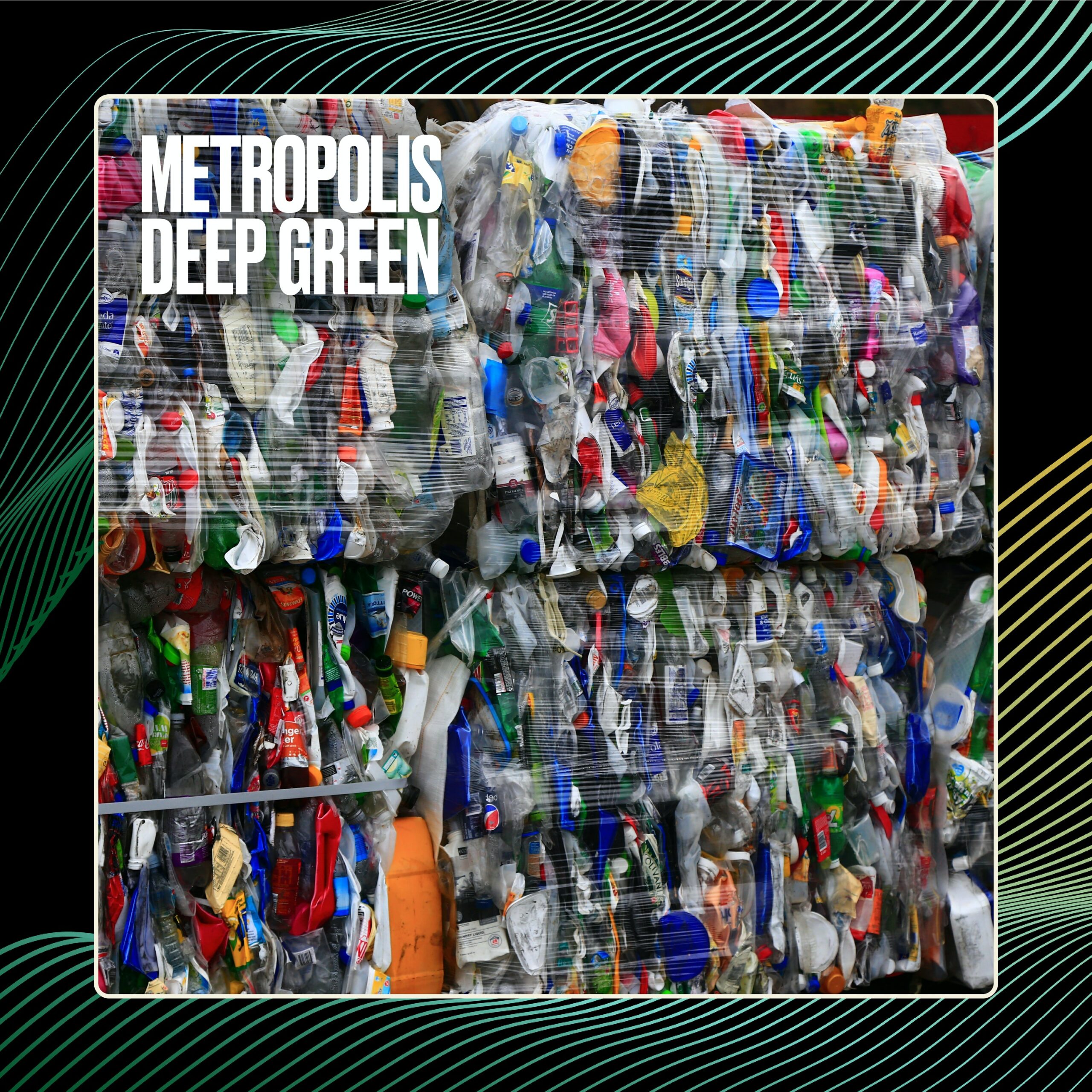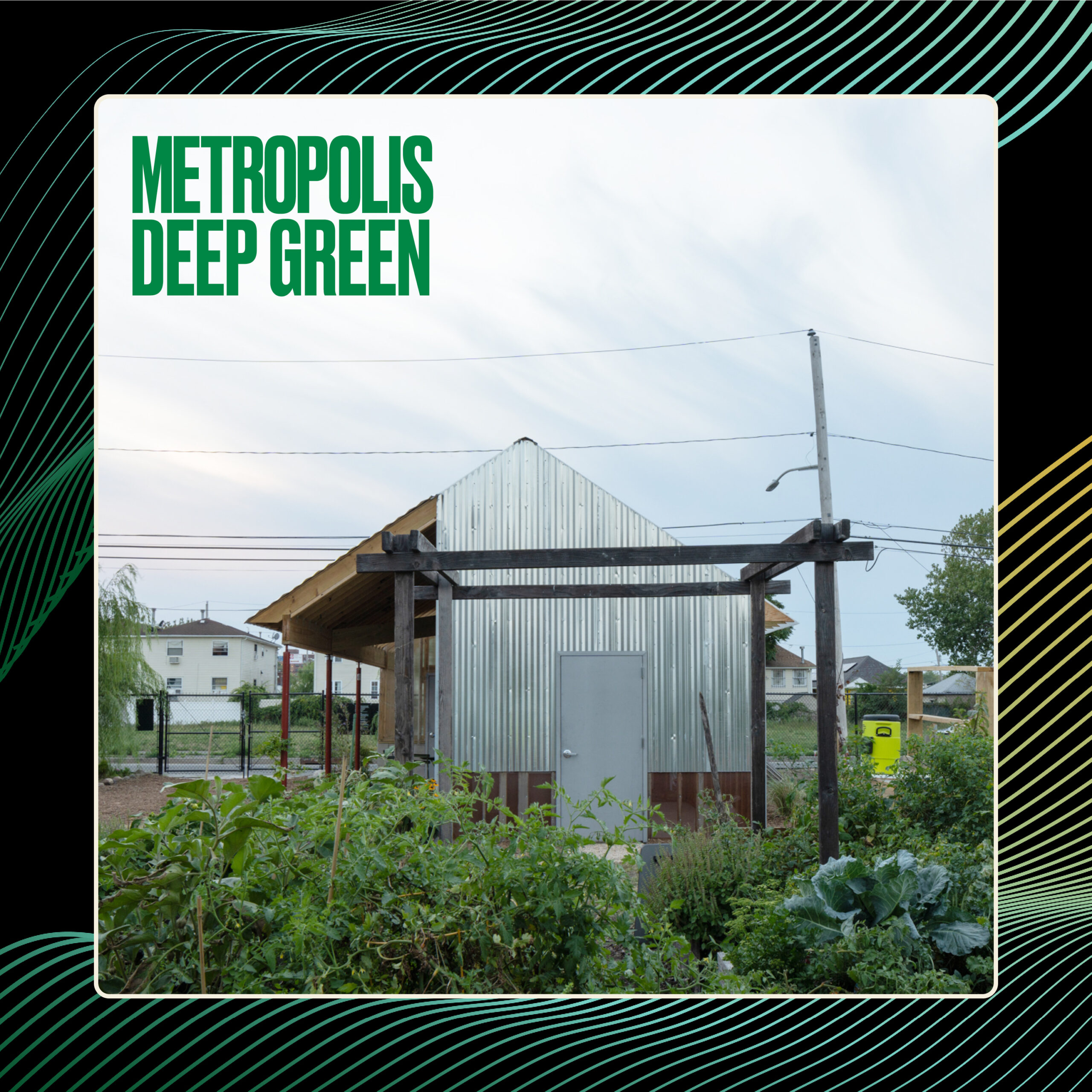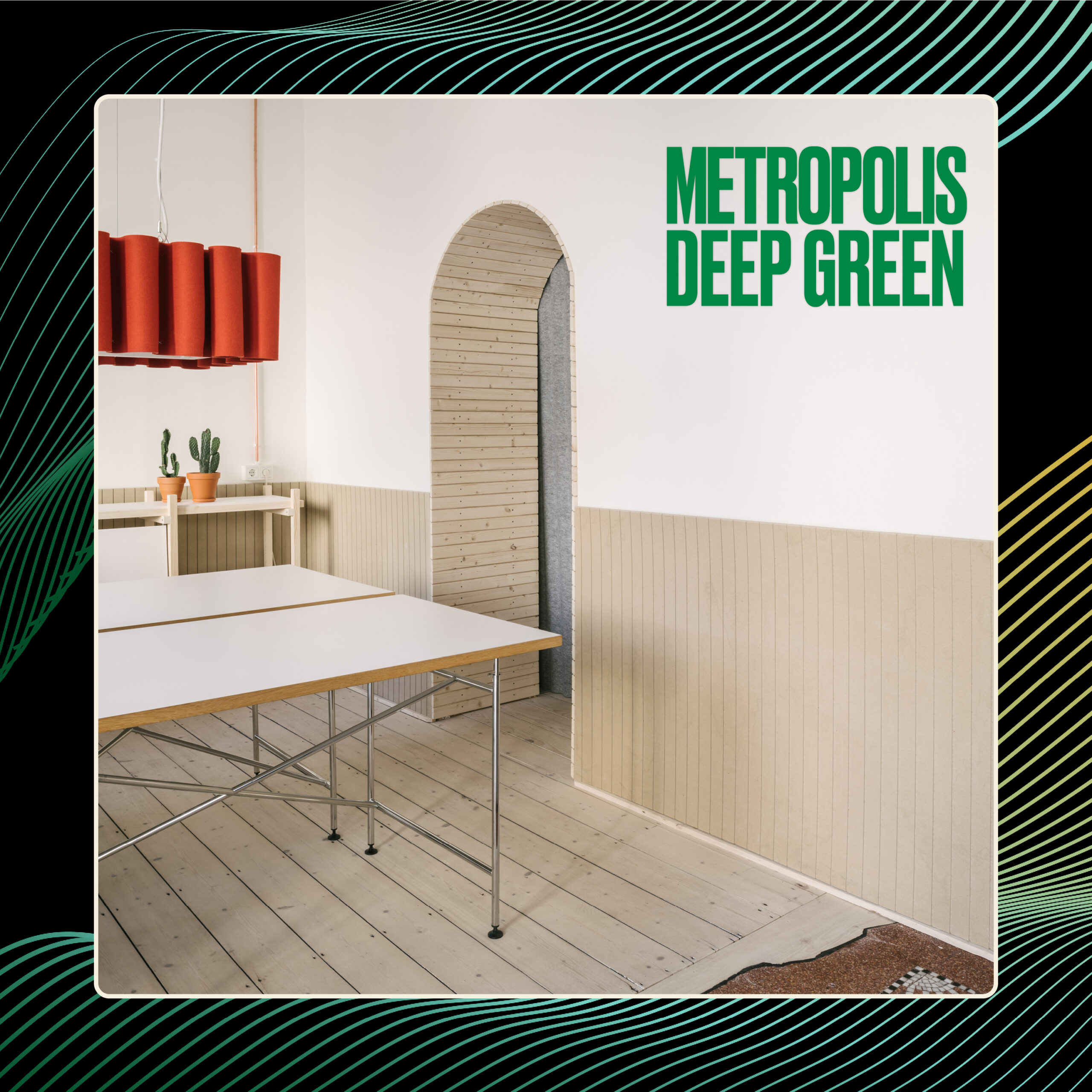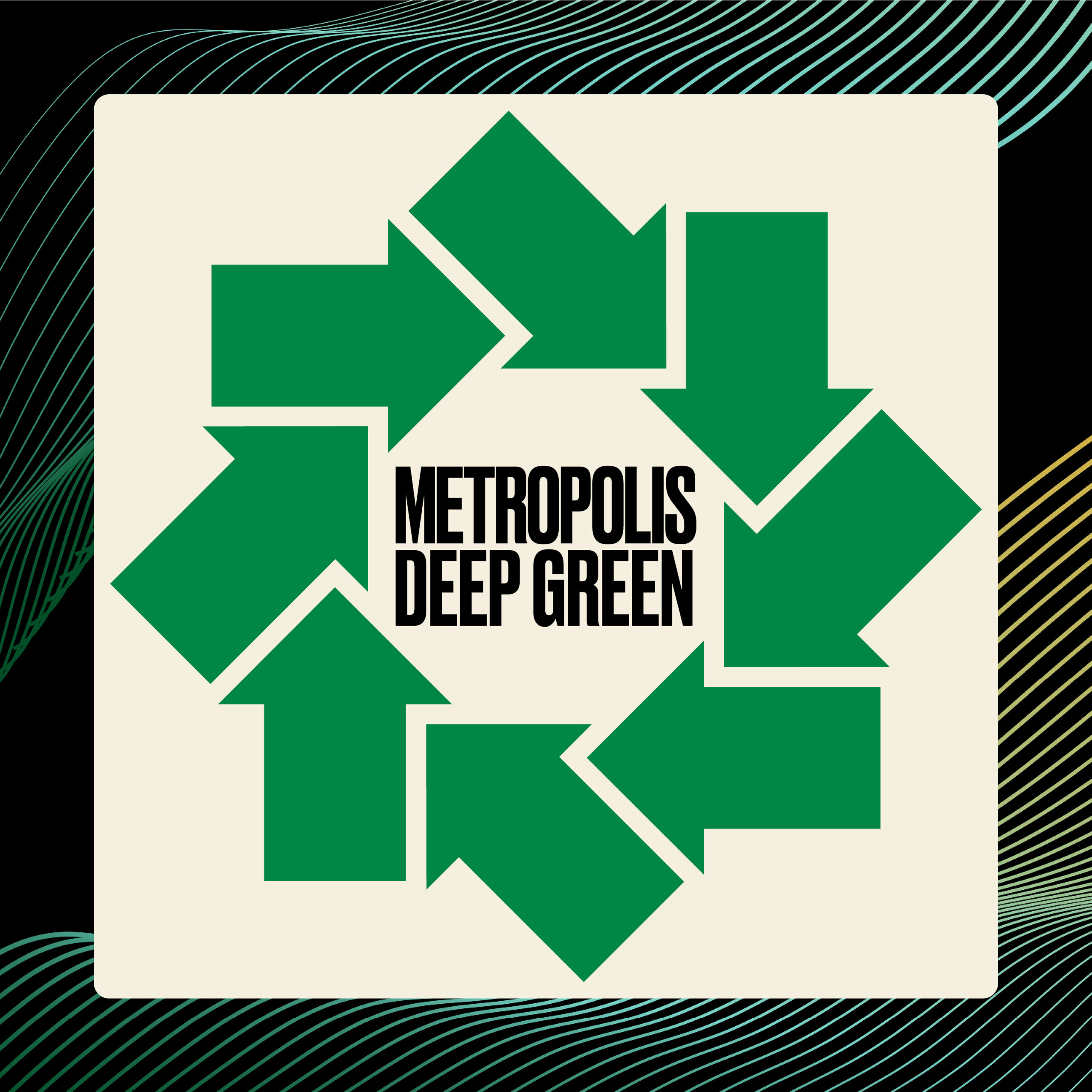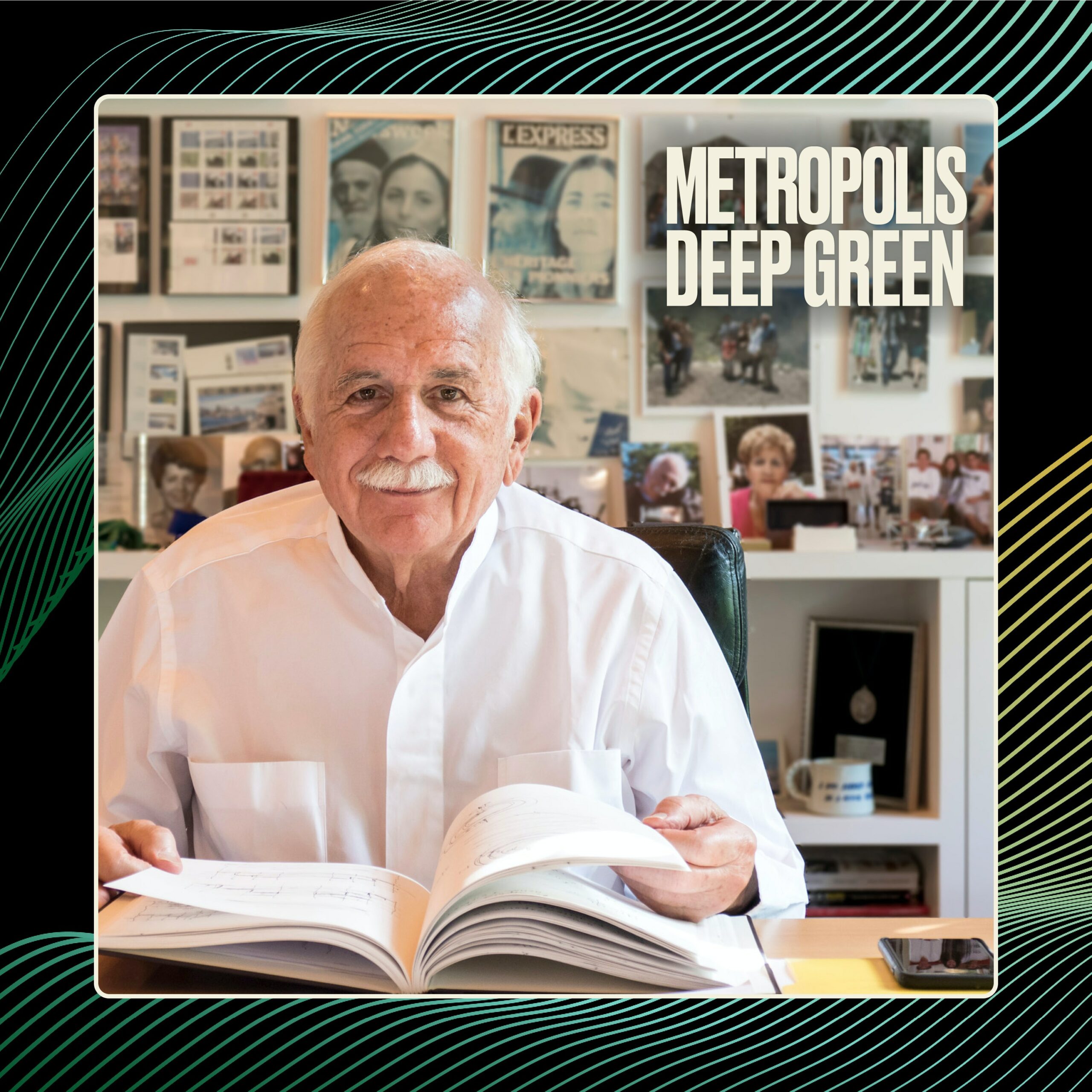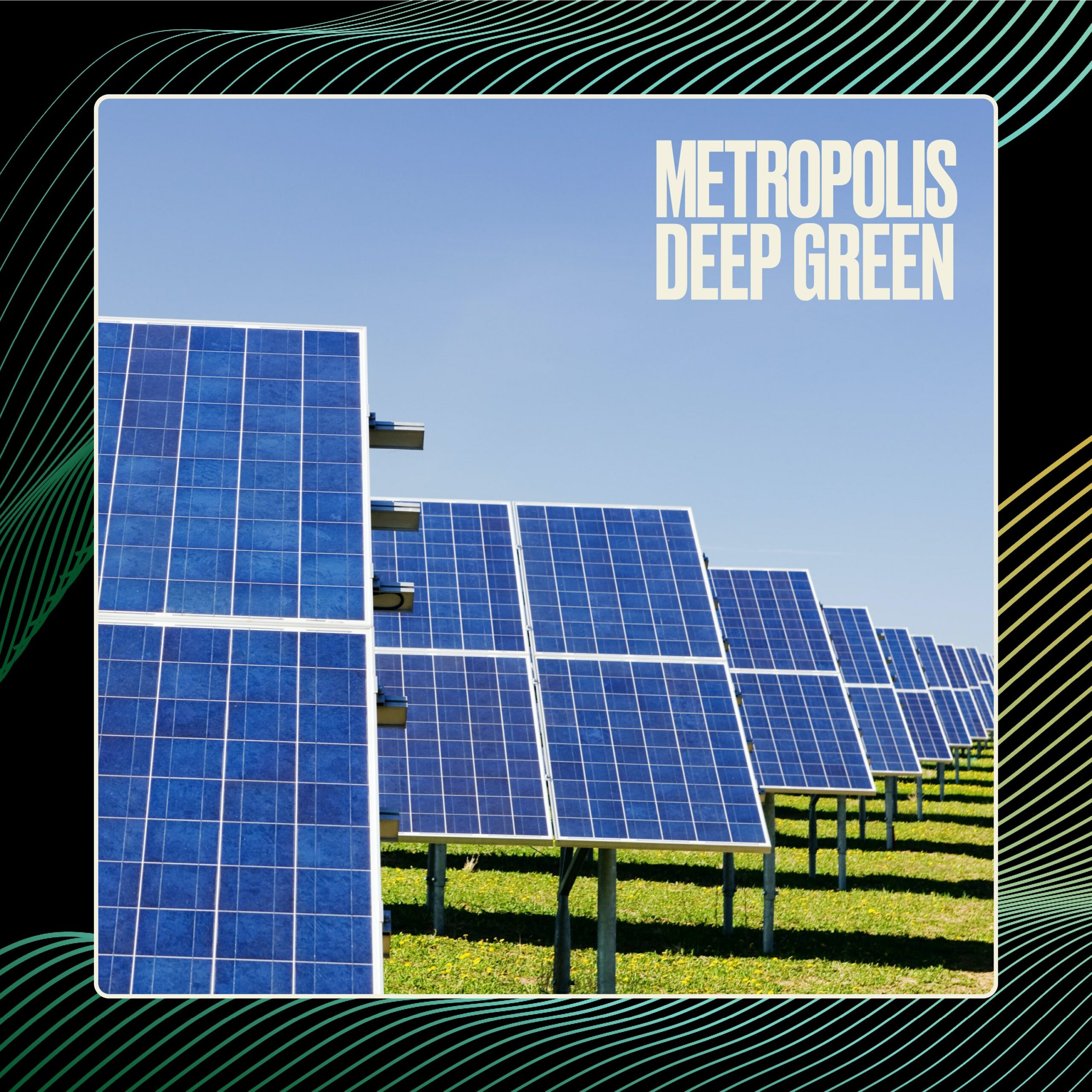In 2002, the architect William McDonough and the chemist Michael Braungart came up with a rather revolutionary idea. The duo had recently published their groundbreaking book, “Cradle to Cradle: Remaking the Way We Make Things,” and would go on to become leaders in the sustainability movement, In fact, they anticipated many aspects of what we today call the circular economy. But back in 2002, the architect and the chemist wrote an essay titled Buildings Like Trees, Cities Like Forests for a book called “The Catalog of the Future.”
Today, 20 years later, we return to that idea: Can buildings be like trees? This episode includes two segments. First, Metropolis editor in chief Avinash Rajagopal reads the introduction to Braungart and McDonough’s essay. Then, we dive into Urban Sequoia, a proposal by the architecture firm SOM that takes giant redwood trees as the inspiration for carbon-capturing skyscrapers and cities.
Resources:
Urban Sequoia Raises the Bar on Carbon Neutral Urban Design: metropolismag.com/projects/urban-sequoia-responsible-disruptors/
Connect with Metropolis:
Instagram: @metropolismag
Facebook: facebook.com/MetropolisMag/
Deep Green is a production of SANDOW Design Group.
[00:00:00] Avi: Welcome to Deep Green , a biweekly show about how the built environment impacts climate change and equity. Deep green is brought to you by metropolis. I’m your host Avi Rajagopal buildings are some of the biggest things we make as human beings. So if you want to know how we can do better for the environment and for all life on this planet, you have to understand buildings and cities and all the things that go into them. And that’s what we want to help you with here at deep green. In 2002, the architect, Willie McDonough and the chemist Michael Brownguard came up with a rather revolutionary idea. The two of them had recently published their groundbreaking book “Cradle to Cradle: Remaking the Way We Make Things” and they would go on to become leaders in the sustainability movement. In fact, they anticipated many aspects of what we today call the circular economy. But back in 2002, the two of them wrote an essay titled Buildings Like Trees, Cities Like Forests for a book called The Catalog of the Future. Today, two decades later, we return to that idea.
[00:01:19] Avi: Can buildings be like trees. We have two segments for you first. I’d like to read you the introduction to Brownguard and McDonough’s essay, which [00:01:30] remains as visionary today as it was 20 years ago. And then we’ll dive into urban Sequoia, a proposal by the architecture firm, som that takes giant Redwood trees, Sequoia as the inspiration for carbon capturing skyscrapers and cities.
[00:01:49] Avi: Here’s part one buildings like trees, cities like forests by William McDonough and Michael Brownguard.
[00:02:10] Avi: When the architect and theorist Le Corbusier imagined the future of cities from the vantage of the early 20th century, he foresaw a new industrial aesthetic that would free design from the constraints of the natural world for Le Corbusier the city was a human operation directed against nature. And the house was a machine for living in.
[00:02:38] Avi: He imagined architecture worldwide shaped by a mass production spirit, the ideal one, single building for all nations and climates. LAI’s friends dismissed his futuristic ideas. All this is for the year 2000. They said, it seems they were. [00:03:00] In many ways. Our world is LAI’s world from Rango to Ray Kiwi, one size fits all buildings, employ the engineers aesthetic to overcome the rules of the natural world, as uplifting as that might be for the spirit of Le Corbusier.
[00:03:16] Avi: It is becoming more apparent all the time that buildings conceived as mass produced machines, impoverished cultural diversity, and leave their inhabitants cut off. From the wonders and delights of nature, but what if buildings were alive? What if our homes and workplaces were like trees, living organisms, participating productively in their surroundings.
[00:03:47] Avi: Imagine a building enmeshed in the landscape that harvests the energy of the sun, sequesters carbon and makes. Imagine onsite wetlands and botanical gardens, recovering nutrients from circulating water, fresh air flowering, plants, and daylight, everywhere, beauty and comfort for every inhabitant, a roof covered in soil and seeum to absorb the falling.
[00:04:22] Avi: Birds nesting and feeding in the building’s burden footprint in shark, a life support [00:04:30] system in harmony with energy flows, human souls, and other living things. Hardly a machine at all. This is not science fiction buildings like trees though. Fewer number already exist. So when we survey the future, the prospect for buildings and cities settled and unsettled lands, we see a new sensibility emerging one in which inhabiting a place becomes a mindful, delightful participation in L.
[00:05:05] Avi: This perspective is both rigorous and poetic. It is built on design principles, inspired by nature’s laws. It is enacted by immersing oneself in the life of a place to discover the most fitting and beautiful materials and forms. It is enacted by immersing oneself in the life of a place to discover the most fitting and beautiful materials.
[00:05:31] Avi: And. It is a design aesthetic that draws equally on the poetic of science and the poetic of space. We hope it is the design strategy of the future.
[00:05:49] Avi: You can read the full text of the essay buildings like trees, cities like [email protected]. That’s M C D O N O U G [00:06:00] H .com. Deep green will be back after a short commercial.
[00:06:14] AD: Deep green is brought to you by the us green building council, a metropolis sustainability next partner, us GBC is committed to a sustainable prosperous future through the lead green building certification. Are you ready to grow your career in green building? Distinguish yourself from your. By becoming a lead green associate.
[00:06:36] AD: Now from the comfort of home, visit us gbc.org to learn more about earning your lead credential.
[00:06:48] Avi: Welcome back to deep green today’s episode is about buildings like trees, cities like forests. We’re here for part two part two urban Sequoia. At cop 26, the 2021 UN climate change conference in Glasgow, som unveiled urban Sequoia, a concept for buildings and their urban context to absorb rather than emit carbon.
[00:07:18] Avi: The project also won a metropolis responsible disruptors award earlier this year. For employing Avan car technologies to support a resilient future [00:07:30] metropolis editor. Sam Lubell sat down with Yasemin Kologlu who is a principal at som and Chris Cooper, who is a partner at the firm to dive into the project.
[00:07:41] Avi: Here are Sam, Chris, and Yasemin.
[00:07:45] Sam Lubell: We wanted to talk about urban Sequoia, which is really an intriguing, fascinating concept. It definitely caught our attention, this idea as a buildings, sort of as trees, buildings, as forests, buildings as kind of a solution rather than a problem, at least to some extent. So maybe you can tell us first about how this came about.
[00:08:04] Sam Lubell: I know that you presented it at cop 26, but how did it first gest date? And then how did it get to the point where you were presenting it?
[00:08:11] Chris Cooper: Well, I think you have to start with a realization that we are all coming to, and that we’re in this tug of war between civilization and nature. if I really started the beginning, right.
[00:08:25] Chris Cooper: And that we’re out of balance and in our industry, we’re recognizing that cities are responsible for. A majority of carbon emissions, and we know that population continues to grow. We know we continue to build more buildings, more cities. And so we continue to push that imbalance. And I think that the industry at large has recognized that we are implicit in this imbalance and that we need to focus on carbon as an industry.
[00:08:59] Chris Cooper: And we have [00:09:00] made great strides in reducing the energy that our buildings use in reducing operational carbon. But we are really, really. Only waking up to the realization of the impacts of embodied carbon, that the, the buildings themselves, the construction of the buildings is responsible for so much of the carbon emissions of civilization of cities.
[00:09:28] Chris Cooper: And so we have been understanding, embodied carbon, trying to look at that. We’ve been looking ourselves at many research initiatives and partnerships with others in peripheral industries and manufacturers and trying to develop materials that might sequester carbon. So we’ve started looking at at small ideas like, oh, maybe we can build a brick that sequesters carbon instead of just a, a carbon sink or holder.
[00:09:55] Chris Cooper: And. In tandem to those various research projects and understanding what others are doing. We were asked to replace a very large building. We were asked to think about how to build a, an existing building better. Could we actually build a building that does more good than harm? And that simple question, forced us to realize, you know what we could, there are existing technologies, there are existing materials.
[00:10:27] Chris Cooper: We have all the, the research is [00:10:30] happening around us. The kid parts is out there. Can we aggregate this? Can we package this into a building that actually absorbs more carbon than it emits? And that was the birth of. The concept, the ideas aggregating all of these various research projects happening around us into one idea.
[00:10:53] Chris Cooper: One concept that a building can sequester more carbon than it emits.
[00:11:00] Sam Lubell: That’s. That’s interesting to sort of hear how let’s rethink this model altogether of a building and maybe you can tell me on a technical level. How this works. How does it do that? How does it sequester carbon versus being sort of a carbon sinkhole?
[00:11:16] Sam Lubell: Like most buildings are.
[00:11:18] Yasemin: I mean, as, as Chris mentioned, actually, you know, we often hear, I mean, I’m sure all of us have heard that, you know, built environment is part of the problem. We are emitting 40%. Some say we’re emitting 70%. And I think the question was, you know, we are, we are all very tired of hearing the do and the glue.
[00:11:34] Yasemin: I think we know it. We understand the challenge, but what is around us that we can take advantage of to make the built environment part of the solution and part of it, I think we had to look around. Our industry and part of it, we had to look outside of our industry into the other industries. You know, we, we did a research on some of the passive technologies, some of the active technologies, some of them that are already realized or in the making.
[00:11:58] Yasemin: And we assessed them [00:12:00] based on their efficiency with their potential, how could they be incorporated or not into the built environment? And as a result, we actually settled around three different ideas. One is kind of what we call the biomaterials. So these are materials that are using natural processes to sequester carbon in their formation, such as bio brick.
[00:12:21] Yasemin: The other one is what we call nature based solutions, such as MicroG, for example, MicroG, as it produces it, as it multiplies with the photosynthesis process, it captures carbon from the atmosphere. And the last one is what I call the technological advancement. And this is systems like the direct air capture technology.
[00:12:42] Yasemin: They do exist in, in the farm format now. So they, in the big farms, direct air capture farms, they do exist as machines. They capture air from one side. Then capture the carbon inside the filter and then let the cleaner out from the other side. And each one of these have their you know, pros and cons.
[00:13:00] Yasemin: So we looked at how could then these technologies be incorporated into a building potentially, and he KR prototype and their efficiencies and how can we make them integrated into the building systems? So we are mainly looking at these type of three groups of systems and technologies to say, to absorb carbon from the atmosphere
[00:13:21] Sam Lubell: so it’s very clear that you have these three kind of techniques, the biomaterials, the nature based, and these new kind of carbon captured technologies, but then how [00:13:30] do they get integrated into the building itself?
[00:13:32] Chris Cooper: We made a single prototype is where we started in this exercise. And we said, can we actually take a high rise?
[00:13:40] Chris Cooper: One of the, um, worst offenders let’s say, and one of the most difficult buildings to solve. Can we take a, a high rise, um, model and, and make that better. And so with those three systems that you Asman described, we’ve tried to incorporate those into one single tower. Now that said that those could be applied to all different building typologies and all different scales.
[00:14:06] Chris Cooper: And so they might be incorporated in different ways, depending on the, the typology and the scale of the building. So since we took the high rises of typology, there are inherent conditions of a Highrise, one of which is stack effect. And that’s something we often try to work against in a building with vestibule and with how we pressurize the various spaces in the building.
[00:14:31] Chris Cooper: But you can actually turn that into a benefit in a case like this, where we have the volume of air moving. Wanting to move from low to the ground to high. And we can use that to kick in or to become the source for our direct air capture mechanism. So direct air capture is a new technology. One thinks about it as let’s say, farms of direct air capture equipment machines in the field, like one used to think of a [00:15:00] solar.
[00:15:00] Chris Cooper: Be array is having to only be existing in a large field, out to generate a lot of power. The direct air capture right now is being prototyped as large fields. And so one idea is that you could take the individual unit, put it into a high rise, use the benefit of the stack effect to actually can reduce the need for extra power to run the direct air capture.
[00:15:23] Chris Cooper: So we could incorporate that either in various points in the building. Or even just at the top of the building as, as an outlet for the air.
[00:15:31] Yasemin: I think biomaterial is an interesting one too, because you know, often when we think about net zero materials or carbon absorbing materials, we tend to go to wood or timber or bamboo.
[00:15:43] Yasemin: There is, there are other challenges with that. There are natural materials, but there’s availability. There’s a mass scale production and sustainable resourcing of them as well. So one of the questions, I think, what if we don’t simply have to rely on those materials? What are the other materials that might function similarly?
[00:15:59] Yasemin: Let’s say, and some of them are already out there such as you know we talk about cork. Sometimes he crates Biore. Bioplastic, some of them are more readily available. Others are more in development, such as the bio brick that we are looking at. And now of course, depending on material properties, these can be used in different parts of the building.
[00:16:19] Yasemin: So for, for it to be structurally used, it needs to be either a Biore type of material or bio type of material that can withstand larger forces. In the meantime, you [00:16:30] know, core can be used as part of the insulation out insulation, et cetera. And then other things like bioplastics can be used for where we use essentially plastics and insulation today.
[00:16:40] Yasemin: So there is different materials require different kind of thinking and integration into the, into building systems. And that’s, what’s really exciting about them actually. So it’s not just one, but we are looking at a variety of them that could be implemented. And I, I think there’s great potential. We’re seeing more and more of it as every day, actually in the industry.
[00:16:58] Sam Lubell: You’ve created these beautiful, these beautiful renderings, these beautiful pictures are these beautiful designs. Um, are these designs sort of meant to optimize what you’re talking about? Are they designs that you’re actually thinking about building at some point, where did that kind of process of imagining what this was gonna look like? , where did that go ?
[00:17:19] Chris Cooper: We imaged a, a single residential tower as the kind of center point of those renderings that you’re seeing. And something that’s important to talk about is that in order to get the carbon footprint down, there’s a lot of thinking that has to go into just the optimization. Of the building, the, the true reduction of the carbon footprint to begin with before we can even think about the sequestering of carbon and offsetting that over the course of its lifetime.
[00:17:50] Chris Cooper: So the, the images that you’re looking at are really thinking about a tower in the most optimized form. And so the, the forms that you’re seeing, the, the slightly [00:18:00] circular form, the repetitive modularity. Of the building and that’s all coming from ideas of, of reducing the materials necessary to build the building in the first place.
[00:18:11] Chris Cooper: So there’s extreme structural optimization in that, you know, when we build a tower we’re working against wind loads. And so that form is designed to resist wind loads with the least amount of material. That form is also thinking about modular construction, which has huge benefits to reducing the carbon.
[00:18:32] Chris Cooper: Footprint and also gives us benefit in the types of concrete that we can use if we do it, if we build off site and then bring it to the site as a pre-fabricated pieces. And so some of the, the aesthetic of what you’re seeing is coming from ideas of structural optimization, form optimization, modularity, and then the corporation of some of these technologies.
[00:19:01] Sam Lubell: The interesting thing about this plan is it’s not just about the buildings, but it’s also about the spaces in between the building. So maybe you can kind of clarify what the plan is outside the buildings themselves.
[00:19:13] Yasemin: So the building alone is, I mean, obviously it’s, it’s a great integer, right?
[00:19:17] Yasemin: That’s what we started with and to test this idea of the prototype, but quickly we arrived at the, um, conclusion that the buildings alone make a difference, just like a tree, but actually when we multiply them, [00:19:30] It creates a bigger network and it absorption factor also multiplies to similar to a forest, let’s say.
[00:19:37] Yasemin: So if you can actually take multiple buildings together and link them in an ecosystem in a network of different technologies and ideas, they become more and more efficient. So then we started thinking about, okay, buildings is one bond integer of the ecosystem, but there is also the sidewalks, the external spaces, the roads, the parks in between them.
[00:19:58] Yasemin: Can we actually customize an ecosystem at a larger scale at a district scale first, maybe to think about how can we use some of these technologies or innovations that we talked about in those spaces too? And actually create a smart network that could exponentially increase absorption potential is what we’ve been also focusing on as well.
[00:20:19] Chris Cooper: Just as we’re thinking about building materials for the buildings that can absorb carbon, we can think about the same for the pavings and the systems that, that connect between the buildings.
[00:20:29] Chris Cooper: This is where it starts getting very exciting because the idea just, it becomes exponential. And I think that’s what has to, it has, it has to be an attitude, a way of working a way of building a way of thinking that we put into all of our new construction and adaptive reuse and the interconnection of each of these buildings and systems. And that, that sets us up for building a [00:21:00] broader network.
[00:21:01] Sam Lubell: I think the impact part is tricky. There’s an estimate from som saying that one of these high rises could sequester as much as a thousand tons of carbon a year. And you could reduce construction emissions up to 95%. How, how do you determine that data?
[00:21:18] Yasemin: As you can imagine. We’re probably one of the first to test this idea at a building scale at a whole building scale. And so we had to refer to individual absorption analysis and tests that were done on different parts, that different group of materials that we’re using here. We had to use, for example, for something like bio brick or biomaterial, it’s about the surface area and the volume.
[00:21:41] Yasemin: So we had to look at basically, what is the volume potential of sequestration per let’s say per volume, and then extrapolate that to our building. And similarly, for example, direct air capture technology. We have data on how much each machine can absorb and also taking out maybe some of the energy requirements that we would actually offset by building systems generally. And multiplying that with the amount of machines that we might be able to accommodate in the building. And I think in this one, we actually took a fairly conservative approach. And then same with the microalgi. We do know that there’s microalgi farms actually today, and we know the potential, the volume of algi has too.
[00:22:22] Yasemin: So we had to look at that for the SACS potential and the amount of materials, et cetera, that go in it. From [00:22:30] the other side, we had to look at how we reduce, right? The structural efficiency, the modularity, et cetera. So we had to start with the whole building and actually try to reduce it as much as possible.
[00:22:40] Yasemin: So the two had to work hand in hand and what we are left with at the end is the Delta left. And over the years we see that Delta growing and growing and hitting about 300% of carbon reduction, three times basic what a building would emit if it was to be built traditionally.
[00:22:56] Chris Cooper: I was just gonna add that the, the reduction of carbon footprint is something that a lot of people are focused on and, and can be done today.
[00:23:04] Chris Cooper: So the reduction is, is really through these systems of optimizing what you build, how much you build the optimization of the structure, and then the use of, of what we call carbon sequestering materials. Today. If we build a timber building, then that can really bring down the embodied carbon. And so the reduction is not such a, a grand statement. The key is that there is something in the building that is continuing to sequester carbon after the completion of construction. Whether that’s the materials, this algae system or the direct air capture and technologies, then it’s a question of time of going past the, the zero point.
[00:23:49] Chris Cooper: And that’s what, you know, as ya’s pointing out, we made what we think are conservative calculations of the timing, but it, it is just a matter of time, if you can build into the [00:24:00] material, something that continues to sequester carbon after its construction.
[00:24:05] Sam Lubell: I guess that brings up the next question, which is how feasible is this? Is this something that you think is actually implementable? Is this something that som is hoping to implement at some point? What are the possibilities of this?
[00:24:17] Chris Cooper: Right? Well, it is absolutely optimistic and it’s ambitious. And, and again, it’s a concept and, and I wanna be cautious not to state that it’s a claim that som is building the urban Sequoia tomorrow, but it’s a concept that will.
[00:24:34] Chris Cooper: Many of us to participate in to make this a reality. It’s a way of thinking that we think is critical to the construction industry, to the world. And that’s first and foremost, the priority here. And so that way of thinking incorporates research and technologies from many people beyond som and everybody has to be working.
[00:24:59] Chris Cooper: Towards the same goal. So this means that there has to be implementation of policy. We should talk more about that. This means that materials that are in research have to become market ready. This means that there has to be the, the will, and eventually it will spur response from infrastructure eventually.
[00:25:21] Chris Cooper: As buildings are sequestering carbon. That means there is a byproduct. There is a product that needs to then be collected and [00:25:30] can go to benefit, can go to other industries can go to, can actually form the, the important loop here so that carbon is put to use. But the technologies exist to build at small scale today in direct response to your question.
[00:25:48] Chris Cooper: I, I think that we could build. A pavilion of carbon sequestering masonry tomorrow. Could we build a tower that incorporates carbon sequestering materials and an algae facade and direct air capture? The answer is maybe not. Immediately tomorrow, but very shortly thereafter. And so we could in, in real time begin the design and implementation of a project like that.
[00:26:21] Chris Cooper: The momentum is building. And so there, we have to all kind of push that momentum.
[00:26:29] Sam Lubell: It, it occurs to me that this is something that is going to be done in small chunks. Not, you’re not gonna build a carbon sequestering tower with an algae facade next week, but like you said, you could start with a pavilion. You could start in a working tower, putting in biomaterials pieces and pieces and pieces, and then finally it, it all adds up sort of like, we’re not all gonna be going into automat. Self-driving cars tomorrow, but we may have features in our cars that, you know, that have that, and then slowly [00:27:00] becomes that .
[00:27:01] Chris Cooper: I think that’s a perfect analogy, but when we are at a turning point where that technology is starting to become a reality,
[00:27:11] Sam Lubell: Yasemin, are you seeing that turning point? Are you seeing receptivity at your firm or with clients to pieces of this at this point?
[00:27:19] Yasemin: Yeah. And, and Sam, that’s an interesting question because we are seeing more and more emphasis on carbon and the requests that we get in the projects that we get, and we see more and more net zero. Some of our clients are very much interested in the beyond zero piece too, which is what we’re talking about here.
[00:27:36] Yasemin: And I think I wanna come back to maybe one point that Chris mentioned, this is an important point here about cross industry. And beyond collaboration. And I wanna mention also a few key advisors and collaborators that we had on this project with that we actually had at Vincent Martinez and Aaron McDate from architecture 2030, and Chris briefly touched on the policy piece or the broader impact piece.
[00:28:01] Yasemin: And I think individuals like them, you can see the broad thinking here with those type of collaborator. We also had SBAR from university of Colorado. This lab was in charge of development of materials, like bio brick and, and other materials we had. Pamela Conrad was a landscape architect from CMG landscape design.
[00:28:22] Yasemin: And she’s also focusing on a naturally sequester string. Environments. And finally Chris Nero of [00:28:30] open air collective, and he comes from a energy background, but open air is focusing mostly on carbon capturing and carbon capturing technology. So bringing this kind of expertise also around one table was important here.
[00:28:42] Yasemin: And I think as us as designers, We have to continue doing this. So the role of architect is quickly changing as we see more and more demand and also interest in this type of technology, this type of attitude towards beyond zero, we have to continue all of us, have to continue working on this together.
[00:29:01] Sam Lubell: I, I assume the policy piece is that’s sort of the ultimate , you know, if we’re gonna get this to work, we need the support, obviously of companies and clients, but we’re gonna need government support a hazard to think that we may not be the first place in the United States that does this. there seem to be other places that are a little bit more behind this kind of technology.
[00:29:24] Chris Cooper: Well, we are, we are seeing change in New York with our new carbon focused laws. The conversation has completely changed. We are now assuming that we’re designing all electric buildings. We are now assuming that we are designing efficient buildings.
[00:29:43] Chris Cooper: And when we have a conversation with our clients, the, the assumption and dialogue and the conversation is totally different than it. Just five years ago, there’s an awakening. that, that, that we have to look at this problem differently. And so we are [00:30:00] very awake. at som we don’t have the answer. We have the, maybe the fear of God a little bit, or the enthusiasm I’ll put it that way and the excitement to make a difference here.
[00:30:12] Chris Cooper: And I think that we’re trying to, we’re trying to shout as loudly as we can. We all need to think about this problem differently. We all need to stop thinking about simply reducing our carbon footprint, simply making more efficient buildings, but we have to do buildings that are proactive. There’s a challenge here for all of us to take on.
[00:30:33] Chris Cooper: And I think that’s the point we’re trying to, to push is this realization that wait a minute, it’s not just good enough to limit the or our carbon emissions, but really we have to. Fix this. And so we’re on board to push for policy we’re on board to push for arterial development. And we’re on board to start to implement piece by piece.
[00:30:54] Sam Lubell: You presented this at cup 26. I’m curious what the response was.
[00:30:59] Chris Cooper: Tremendous response. I think what was, what was the most satisfying for us was the wide appeal of the concept, the understanding of the concept and the. Wide range of outlets that picked it up and were eager to talk about it. It was outside of the construction industry.
[00:31:20] Chris Cooper: It was not perceived as just a, a construction centric solution, but one that was a solution and an idea [00:31:30] for, for all of us, the response has been very positive and I think it was really a launching point for the idea.
[00:31:37] Yasemin: And actually there are two anecdotes that I like selling about this. We actually, one of our colleagues’ mother called him and said, oh my goodness, urban sequoia is, is on TV. Have you been involved in, this is a great project. Why aren’t we already doing this? And the second one is, I think we had someone saying that now this is the kind of project that I wanna talk to my kids about. So I think this kind of not just raising awareness in our circles, in the building industry, but also reaching a broader audience to raise awareness generally in society.
[00:32:07] Yasemin: So I think projects like this play an important role in there for the understanding and adoption of some of these ideas we’re talking about.
[00:32:14] Sam Lubell: I respect the ideas. I also respect the way that you present them and, and visualize them. I think that does help people that sort of are just hearing numbers and facts really start to visualize in different kind of future.
[00:32:26] Sam Lubell: That’s really encouraging and really excited to see where you go with this next in little bites and in bigger bites, Chris and Yasin. I really, really appreciate you. , talking with me, it’s really been fascinating.
[00:32:39] Chris Cooper: Yeah, we’re very happy to have the opportunity to talk about this. And, and, and we’re gonna have to do this together. This is not going to be of the action of a few. This is gonna be the action of many to, to make this happen.
[00:32:57] Avi: Deep green is produced by metropolis. [00:33:00] I’m your host Avi Rajagopal and today’s episode was reported by Sam Lubell. The podcast is edited by Hannah Vidi with support from Lauren Volker if you want to read the full text of Willie McDonough and Michael Brown’s essay, you can find [email protected]. That’s MC D O N O U G h.com.
[00:33:24] Avi: If you want to read more about urban Sequoia head on over to metropolis mag dot. A big, thanks to today’s guests and to all the folks at SANDOW design group who support deep green. We’ll be back again in two weeks with another episode of deep green available, wherever you get your podcasts.

